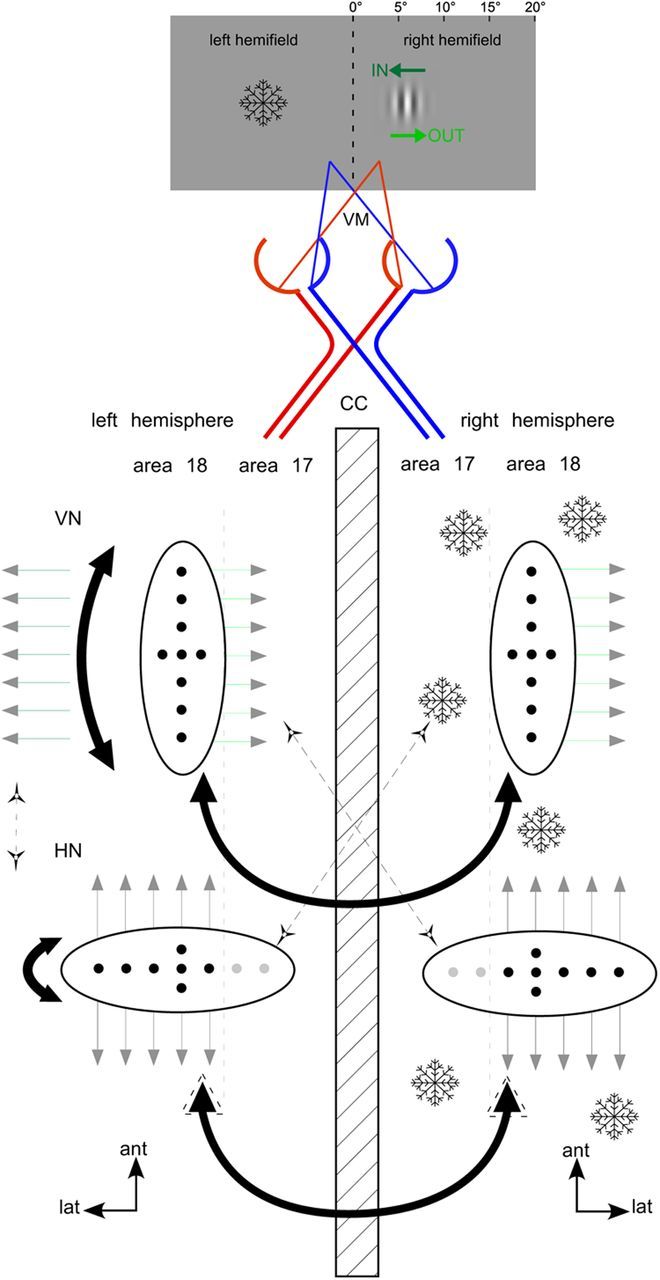Figure 9.

Intrahemispheric and interhemispheric circuits are anisotropic. Anisotropy of long-range intrahemispheric and interhemispheric connections (black lines) linking neurons (black dots) with collinearly aligned RFs close to the cortical representation of the VM. The circuit of intrahemispherically linked neurons preferring horizontal contours (HN) forms an ellipse that is interrupted at the 17/18 border to be continued into the other hemisphere by CCs (black). That is why CC impact on HN appears larger (indicated by a dotted arrow) when not separating motion directions and also with larger stimuli (Fig. 7B). The circuit among neurons preferring vertical contours (VN) stretches parallel to the border (Schmidt et al., 1997b). That is why responses of VN, especially to the IN direction of movement (little dark green arrows to the left), can get stabilized when CCs are deactivated (snowflakes). All connections are reciprocal and link also neurons of non–iso-preference weakly (dotted black diagonals). Lat, lateral; ant, anterior. Other conventions as in Figure 1.
